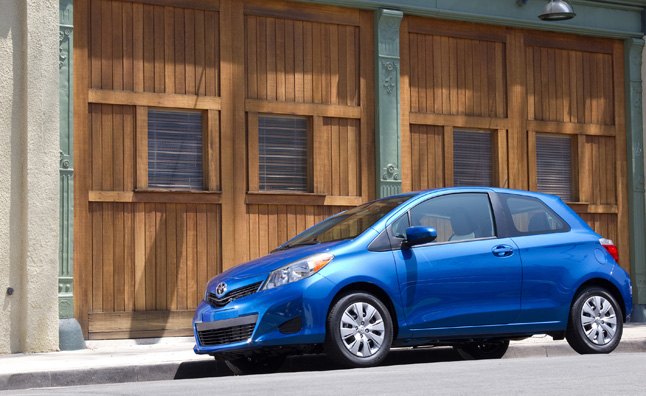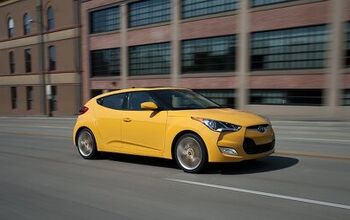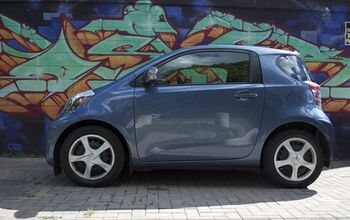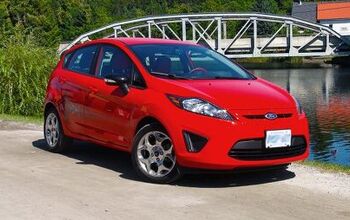Five-Point Inspection: 2012 Toyota Yaris LE

The subject of this week’s Five-Point Inspection is the cheapest car in Toyota’s North America lineup, the Yaris.
For the base L trim, the Yaris costs $14,875, and runs as high as $16,860 for the LE model. A small, basic commuter car, the Yaris is a basic package for a low price.
Read on for the five major likes and dislikes regarding the 2012 Toyota Yaris.
While you can’t expect a sub-compact to be an S-Class size-wise, the wheel should at least be able to sit a comfortable distance away from the driver, a trait which isn’t found in the Toyota Yaris. The simple addition of a telescopic wheel would work wonders in the small Yaris. Making matters worse is the absence of an armrest, leaving your arms with nowhere to go but the wheel, which is just to close to the chest to allow much comfort.
Cruising around the city, the Yaris isn’t particularly noisy, but on the highway the wind noise gets annoying quickly. Engine noise never pushes past an expected level, but when the winds pick up, the stereo volume knob has to compensate by rising one or two notches as well.
Other supcompacts, like the Ford Fiesta and Chevrolet Sonic, are notably quieter on the highway, though the Yaris may be the best for drowning out your mother-in-law.
The Yaris doesn’t try and lie about what it is. It’s a simple car with a simple message: basic transportation.
As a result, it doesn’t struggle to deliver on every promise it makes.
Looking at the interior ergonomics just once allows you to learn everything you need to know about controls, and driving it just once allows you to learn the car’s limits.
The Yaris can turn from curb to curb in just 30.8 feet, a full four less than the Ford Fiesta, Chevy Sonic and Hyundai Accent.
Combine that small turning radius with the Yaris’ lightweight steering, and the small Toyota reveals itself as a master of the parking lot, easily zipping in and out of any space that you spot.
After a 300-mile road trip and a week full of city driving, the Yaris averaged 28 mpg, falling short of the epa’s rating of 30 city/35 highway estimate. The obvious answer to this lack of mpg is replacing the four-speed automatic transmission, which is well behind most of its competitor’s six-speed units.
Opting for the five-speed manual transmission in the Yaris improves highway efficiency by three mpg, so adding yet another cog would no doubt drive that number even higher, likely pushing the Yaris to the coveted 40 mpg level.
A great commuter car needs great fuel mileage, and the Yaris doesn’t quite deliver, making the mundane looks and power unjustifiable.
Thinking about buying a new car? Interested in a Toyota Yaris?
Visit AutoGuide’s new car buying section here. If you want, you can skip to Toyota, or jump to the Yaris.

Stephen covers all of the day-to-day events of the industry as the News Editor at AutoGuide, along with being the AG truck expert. His truck knowledge comes from working long days on the woodlot with pickups and driving straight trucks professionally. When not at his desk, Steve can be found playing his bass or riding his snowmobile or Sea-Doo. Find Stephen on <A title="@Selmer07 on Twitter" href="http://www.twitter.com/selmer07">Twitter</A> and <A title="Stephen on Google+" href="http://plus.google.com/117833131531784822251?rel=author">Google+</A>
More by Stephen Elmer






































Comments
Join the conversation
Thanks for the informative... oh wait... no one cars about the Yaris.